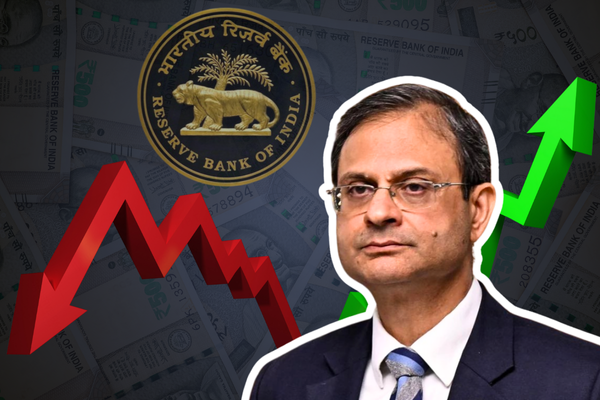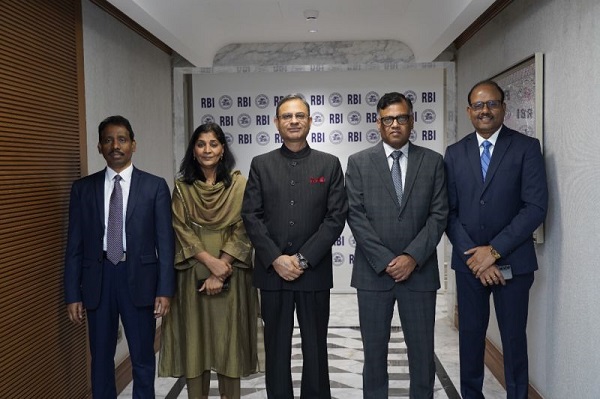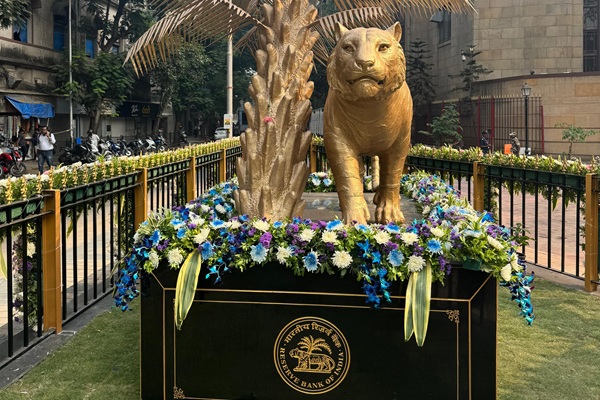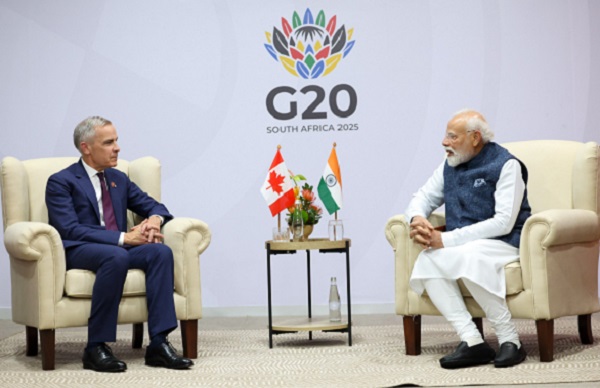.png)
Glass Half Full, Half Tariff
Trump calls it a ‘dead economy’; the RBI governor answers with monsoon cheer, falling inflation and a festival season pitch for resilience.

August 6, 2025 at 6:42 AM IST
It is hard to miss the cheer in the Reserve Bank governor’s August statement. Festive greetings open the monetary policy review, monsoon rains promise a bumper kharif crop, rural demand looks sturdy, and foreign exchange reserves stand at a comfortable $689 billion. Inflation has fallen to a 77-month low of 2.1% and growth projections are intact at 6.5%. The message is clear: India’s glass, in his telling, is more than half full.
That tone rests on several tailwinds. A better-than-average monsoon is replenishing reservoirs and lifting rural sentiment. Government capital expenditure is running more than 50% above last year, providing ballast to investment and construction. Services exports, led by software and business support, continue to grow and now account for 4.3% of global trade. Food prices, long a source of volatility, are in rare deflation thanks to improved harvests and supply-side interventions. Bank balance sheets are healthier, and credit transmission from the 100 basis point easing since February is filtering through, albeit gradually.
This festival season, optimism comes at a time when the global backdrop is far less forgiving. President Donald Trump has bracketed India with China and Russia in his new trade order, imposing 25% tariffs on Indian exports and hinting at surcharges on oil sourced from Moscow. His “dead economy” jibe exaggerates India’s slowdown, but it signals how Washington’s trade posture has hardened. For policymakers in Delhi, the irony is sharp: a domestic narrative built around resilience just as external risks intensify.
The governor’s statement sidesteps these tensions, focusing instead on domestic buffers. Rural consumption remains brisk, with tractor and two-wheeler sales climbing. Core inflation is anchored near 4%, and headline inflation, driven lower by food, is still below target. Even in industry, where mining and electricity have contracted, there are pockets of strength in manufacturing and construction. In a world of sticky inflation and muted global growth, that combination is no small achievement.
Yet the risks ahead cannot be wished away. Tariffs threaten to widen the merchandise trade deficit and sap export momentum. Urban discretionary spending remains tepid, and high-frequency indicators such as retail sales and passenger traffic suggest patchy demand. The RBI’s own forecast shows headline inflation rising back above 4% later this year, effectively signalling an end to the easing cycle. Foreign exchange reserves offer comfort, but they cannot fully shield against prolonged trade hostilities or capital outflows if US rates stay elevated.
That makes the governor’s upbeat tone both deliberate and strategic. Central banking is as much about sentiment as spreadsheets; confidence can buy breathing space when policy levers are near their limits. By foregrounding bright prospects and comfortable buffers, the RBI aims to anchor expectations at a time of uncertainty without over-promising. The test will come if tariffs start biting harder and domestic demand falters — a reminder that optimism is easier to project than to sustain.
For now, India’s monetary policy glass remains half full. Whether it stays that way will depend less on the rain clouds above and more on the trade winds blowing on Truth Social.



